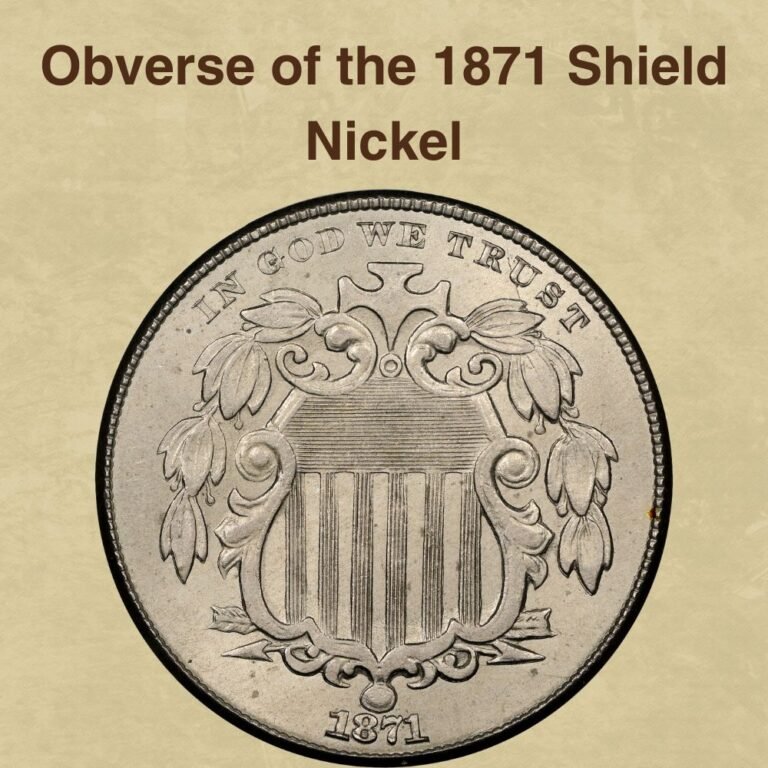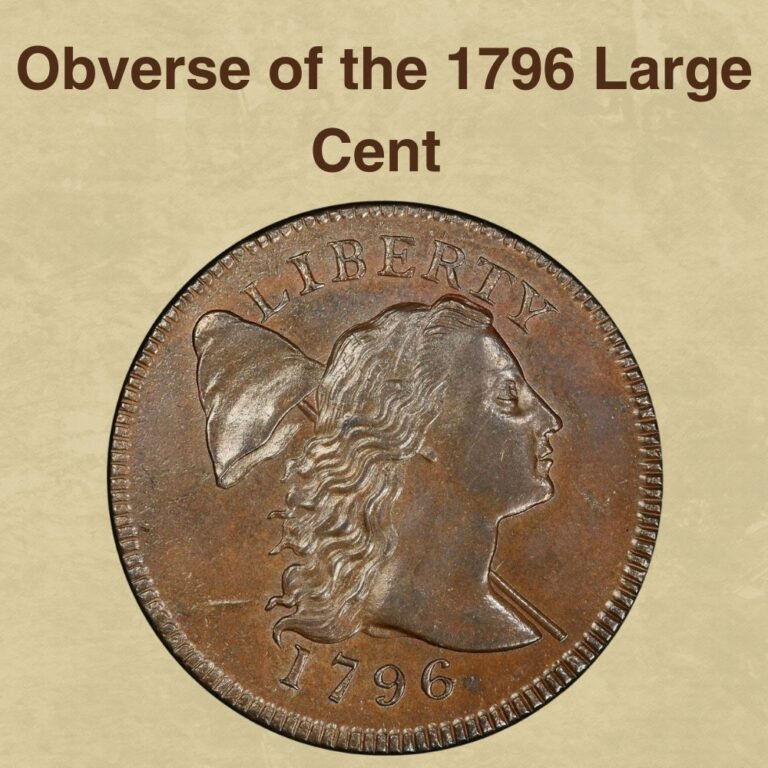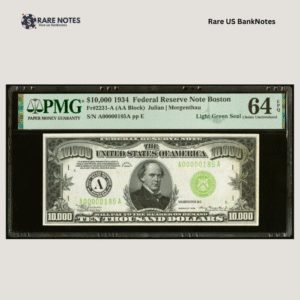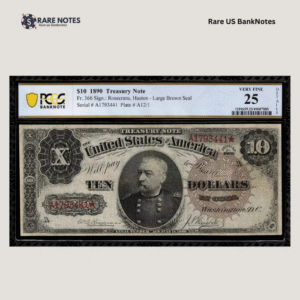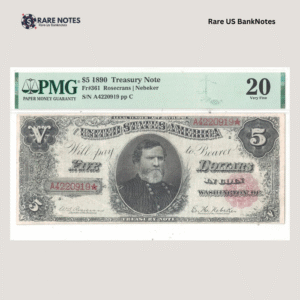Are you building your Draped Bust dime collection and curious about the famed 1797 dime? As one of the earliest U.S. coins, the 1797 Draped Bust dime is highly sought-after. In addition to its fascinating historical status, this coin also boasts a very low mintage making it extremely valuable even in lower grades.
Excited about discovering the 1797 dime value? This guide will explain everything you need to know about this interesting coin. You’ll learn about its history, standout features, and tips for grading and authenticating your dime. You’ll also discover high-value minting errors worthy of a spot in your collection.
So, let’s get started and find out: How much is a 1797 dime?
1797 Large Cent Value Chart |
||||
| Mint Mark | Good | Fine | Extremely Fine | Uncirculated |
| 1797 16-Stars Dime | $3,050 | $6,400 | $12, 350 | $130,000 |
| 1797 13-Stars Dime | $4,250 | $7,000 | $15,750 | $300,000 |
History of the 1797 Dime
The 1797 dime belongs to the famous Draped Bust series, which the United States Mint struck from 1796 to 1807. The Draped Bust replaced the Flowing Hair dollar, which had received extensive criticism from the public and officials.
Robert Scot, the U.S. Mint Chief Engraver designed the Draped Bust series by transforming Liberty’s portrait to a bustier, more mature-looking image. This new portrait is believed to have been modelled after Philadelphia socialite, Ann Willing Bingham.
There are three versions of the reverse design of the Draped Bust coins. The early pieces feature the coin’s value encircled by a wreath. On the coins dated 1795-1797, the reverse features a small bald eagle, giving these coins the name Draped Bust, Small Eagle. The design changed in 1798 after the small eagle was replaced by a Heraldic Eagle and this design was subsequently known as the Draped Bust, Heraldic Eagle.
Another outstanding feature of the Draped Bust coins, including the 1797 dimes, is the number of stars on the obverse. Initially, the Mint purposed to add a star to the obverse design each time a new state was welcomed to the Union. By 1796, 15 states, including Vermont and Kentucky, had joined the Union so each coin featured 15 stars. Later that year, Tennessee joined and the Mint added a 16ths star.
Some 1797 dimes were minted with 16 stars but soon afterward the Mint realized that adding stars to the design was unsustainable and would cause crowding and distort the design. As a result, the coins that followed featured only 13 stars, representing the original states. Due to this change, some 1797 dimes feature 13 stars on the obverse.
The 1797 dime boasts a very low mintage for both the 16- and 13-stars variety. Survivors are scarce but collectible, fetching premium prices. This coin is definitely an important piece for any collector looking to complete the Draped Bust coin collection.
Also read: Top 17 Most Valuable Roosevelt Dimes Worth Money
Features of the 1797 Dime
Let’s now learn more about the physical characteristics of the 1797 dime. By knowing these design details, you can grade your dime more accurately, authenticate it and spot Draped Bust dimes that are worth a fortune.
Here’s what to look out for:
Obverse of the 1797 Dime

The front side of the 1797 dime features a buxom Lady Liberty in drapey clothing with some of her hair strands held behind lightly with a ribbon.
The word LIBERTY is inscribed above her portrait while the date, 1797, is shown at the bottom along the rim.
On the 16-stars 1797 dimes, Liberty’s portrait is surrounded by 16 stars, 9 to the left and 8 to the right. On the 13-stars variety, there are 7 stars to the left and 6 to the right.
Reverse of the 1797 Dime

The reverse displays a scrawny bald eagle with wings outstretched and perched on a billow of cloud. The eagle’s image is encircled in a wreath tied at the bottom with a ribbon.
The words UNITED STATES OF AMERICA, are inscribed around the coin’s rim. Notably missing is the denomination; as was the norm at the time, a coin’s denomination would be discerned from the size, with each denomination increasing in size up to the silver dollar, which was the largest of them all.
Other Features of the 1797 Dime
Additional standout features of the 1797 dime include:
- Diameter: 19.80 millimeters
- Weight: 2.70 grams
- Edge: Reeded
- Metal Content: 2% Silver, 10.8% Copper
- Fineness: 892
- ASW: 0.0774oz
Also read: Top 17 Most Valuable Mercury Dimes Worth Money
1797 Dime Value Guides
So, let’s answer the big question: How much is a 1797 dime worth? The value depends on the coin’s condition and whether it’s a 16-or 13-stars dime.
We’ll look at the value of the two varieties of the 1797 dime:
- 1797 16-Star Dime
- 1797 13-Star Dime
1797 16-Stars Dime Value

The Philadelphia Mint (the only Mint at the time) struck about 10,000 16-stars dimes in 1797. This was one of the lowest mintages in the series. It is believed that the Mint had prepared undated dies of the dime featuring 16 stars and only added the date when it was time to strike the coins.
As you might have already guessed, 1797 dimes with 16 stars are scarce across all grades. Most survivors are heavily worn due to age and environmental exposure. Very few examples exist in Mint State and none is graded higher than MS66.
Here’s a breakdown of the value of a 1797 16- stars dime:
Circulated Examples: These are scarce with survivors showing heavy wear. But even in lower grades, these surviving dimes will command significant premiums. For example, at grade Poor/Average, you can expect as much as $1,700 and at Good (G) the prices almost double to sell at $3,050. A rare example graded Fine (F) will fetch as much as $6,400 while an Extremely Fine (XF) dime will sell for up to $12,350. A piece graded About Uncirculated (AU58) will bring in $27,500 or more.
Mint State Examples: Uncirculated pieces are genuinely rare, especially in higher grades. As expected, Mint State examples will sell for high premiums even in lower grades. At MS60 an example will sell for at least $32,000 and at MS64, the price more than doubles to $72,500. Extremely rare gems graded MS66 can command $130,000 or more.
Auction Record: In 2015, Stack’s Bowers auctioned an MS66 for a record-shattering $199, 750.
1797 13-Stars Dime Value

Next, we’ll look at the 13-stars variety, which had a mintage of about 5, 918. With such a low mintage, the 1797 13-stars dime is one of the most sought-after in the Draped Bust series.
So, how much is a 1797 13-stars dime? Here’s what to expect:
- Circulated Examples: Worn examples are scarce with most examples showing heavy wear on the obverse and reverse designs. On the upside, even with a low-grade coin, you’d still be able to fetch a fortune. For example, a piece graded Poor/Average will sell for up to $2,100 and the price doubles to $4,250 for a piece graded Good (G). Fine (F) dimes will command prices as high as $7,000 and as much as $15,750 for an Extremely Fine (XF). A rare About Uncirculated (AU58) will fetch as much as $39,000 or more.
- Mint State Examples: Uncirculated examples are rarely seen and prices can be prohibitive. An example graded MS60, for instance, will bring in as much as $52,500 while an MS64 will command a premium of up to $230,000 or more. Gems are genuinely scarce with prices reaching as high as $300,000.
- Auction Record: In 2008, Heritage Auctions sold an MS65 for a staggering $402,500.
1797 Dime Grading
Grading the 1797 dime involves carefully examining the coin for wear and strike quality. Particularly, pay attention to high-contact points on the obverse and reverse to assess the extent of wear.
On the obverse, assess Liberty’s bust, stars, and the date. On worn coins, these details will be smooth and barely visible. On the reverse, the wreath and inscriptions will also show heavy wear on lower grade coins.
Middle-grade coins will show moderate wear on the high contact points although most of the details will be distinguishable. Coins slightly higher on the grade will have only light wear; the design details and inscriptions on both sides of the coin will be fully visible but some signs of wear will still show.
Uncirculated Mint State examples are highly appealing to the eye. They display original mint luster and perfect strike quality where all the design details are in tact and fully visible.
Rare 1797 Dime Errors List
Aside from the two main varieties: 16-and 13-stars dimes, several other minting errors and varieties show up in the 1797 dime series. Advanced collectors pay attention to small differences in the denticles, star spacing and size, bust shape and position, and even the denticles.
In addition to these advanced techniques, you can collect 1797 dimes based on common minting errors seen on these coins. Here are some of the most valuable minting errors to watch out for:
1. 1797 Dime Die Crack Error

In earlier states, the die used to strike the 1797 dime is in perfect condition but later, as seen on some coins, the die develops a crack just above the date. In even later die states, the crack is so dominant it appears like a deep gouge on the coin’s surface.
Die cracks can add a touch of drama and eye-appeal to a coin, subsequently boosting its value. With a die crack error, expect an additional $50-$100 to the regular value of your 1797 dime.
2. 1797 Clashed Dies Error
Clashed die errors are not as common as die cracks but they can still be found in the 1797 dime series. This error occurs when the reverse and obverse dies clash without a planchet between them, resulting in the dies transferring their respective designs onto each other.
When the planchet is eventually struck, the dies transfer their designs onto the planchet, resulting in a coin with subtle signs of the reverse design on the obverse and vice versa.
Clashed die errors can be quite intriguing, making them highly-sought after. If you come across a 1797 dime with such an error, it can fetch $100-$200 more on top of the coin’s value.
3. 1797 Dime Doubled Die Error
A doubled die error occurs when the die strikes the planchet multiple times at slightly different angles. This results in doubling on the design elements and inscriptions, also known as a doubled die error.
The value of a doubled die error depends on the intensity or visibility of the doubling. The stronger the doubling, the more valuable the error tends to be.
A doubled die error can add $50-$100 more to the regular value of your 1797 dime.
4. 1797 Dime Struck-Through Error
Another error worth looking out for is the struck-through, which occurs when a foreign object is accidently struck between the die and planchet, leaving its impression on the coin.
Anything from drops of grease to hair strands, strings, wood specks, or metal chips can come between the die and planchet. Some of these foreign elements leave a dramatic impression and can significantly increase the coin’s value.
The more unique and dramatic the struck-through error, the more valuable it generally is. Examples can fetch $50-$200 depending on the error’s eye-appeal.
Where to Sell Your 1797 Barber Dime?
Now that you know the value of your coins, do you know where to sell those coins online easily? Don’t worry, I’ve compiled a list of these sites, including their introduction, pros, and cons.
Check out now: Best Places To Sell Coins Online (Pros & Cons)
FAQs
How much is a 1797 dime worth?
The value of a 1797 Draped Bust Dime depends on its condition and whether it is a 16-or 13-stars variety. Although lower grade examples can sell for relatively high prices, higher grade specimens can command five or six-figure prices, making them highly-desirable. Additionally, the 13-stars dimes are scarcer than their 16-stars counterparts, making them significantly more valuable. All in all, the value of the 1797 dime ranges from $1,700 to $300,000 or more.
How rare is a 1797 dime?
Due to its low mintage, the 1797 dime is noticeably rare across all grades. You might still come across survivors today but most will be heavily worn. Mint State examples are extremely rare with none graded higher than MS66.
How can I tell if my 1797 dime is real?
Due to its historic status and high demand among collectors, the 1797 dime is prone to counterfeiting. To authenticate your coin, countercheck its key features including the diameter (19.80 millimeters), weight (2.70 grams), and edge (reeded). Use images of authentic 1797 dimes from professional bodies such as the Professional Coin Grading Service (PCGS), Numismatic Guaranty Company (NGC), or Heritage Auctions to compare the design elements on the obverse and reverse, ensuring they are closely similar.
The post 1797 Dime Coin Value: How Much Is It Worth Today? appeared first on CoinValueChecker.com.




